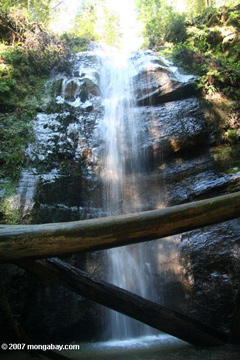U.S. wildlife refuges generate 4x return on investment
U.S. wildlife refuges generate 4x return on investment
mongabay.com
November 28, 2007
National wildlife refuges generate about $4 in economic activity for every $1 the government spends, according to a study released by the U.S. Fish and Wildlife Service Tuesday.
The report, titled “Banking on Nature 2006: The Economic Benefits to Local Communities of National Wildlife Refuge Visitation”, found that nearly 35 million people visited national wildlife refuges in 2006, supporting about 27,000 private sector jobs and producing about $543 million in employment income, $185.3 million in tax revenue at the local, county, state and federal level, and $1.7 billion in total economic activity. The economic benefit was nearly four times the amount appropriated to the national wildlife refuge system for the 2006 fiscal year.
 Big Basin Redwoods State Park in Santa Cruz Country, California |
“We’ve always known that national wildlife refuges enrich Americans’ lives,” said U.S. Fish and Wildlife Service Director H. Dale Hall. “This report reveals that the Refuge System, while admirably fulfilling its conservation mission, also repays us in dollars and cents. Those economic benefits go far beyond the system’s mandated mission to ensure wild creatures will always have a place on the American landscape.”
The report found that 82 percent of total expenditures came from non-consumptive recreation (recreation other than hunting and fishing) on national wildlife refuges. Fishing accounted for 12 percent of total expenditures, while hunting accounted for 6 percent.
The National Wildlife Refuge System encompasses 97 million acres and 548 national wildlife refuges across the United States. Of the report’s 80 national wildlife refuges–units with fewer than 1,500 visitors per year and those in Hawaii and Alaska were excluded from the final calculations– Chincoteague National Wildlife Refuge in Virginia showed the greatest economic benefit, with $155.42 returned for every $1 in budgeted expenditures. It also lead the country in recreational visits (about 7.5 million), as the most jobs (3,766), and total economic return ($315.4 million).
The report noted other wildlife reserves with especially high returns, including Don Edwards San Francisco National Wildlife Refuge which had more than 1.5 million visits in 2006 and returned $43.55 for every $1 in federal budget expenditures; Bombay Hook National Wildlife Refuge in northeastern Delaware which had 271,000 visitors in 2006 and returned $23.38 for every $1 in budgeted expenditures; and Muscatatuck in south central Indiana which returned $21.56 for every $1 in budgeted expenditures.